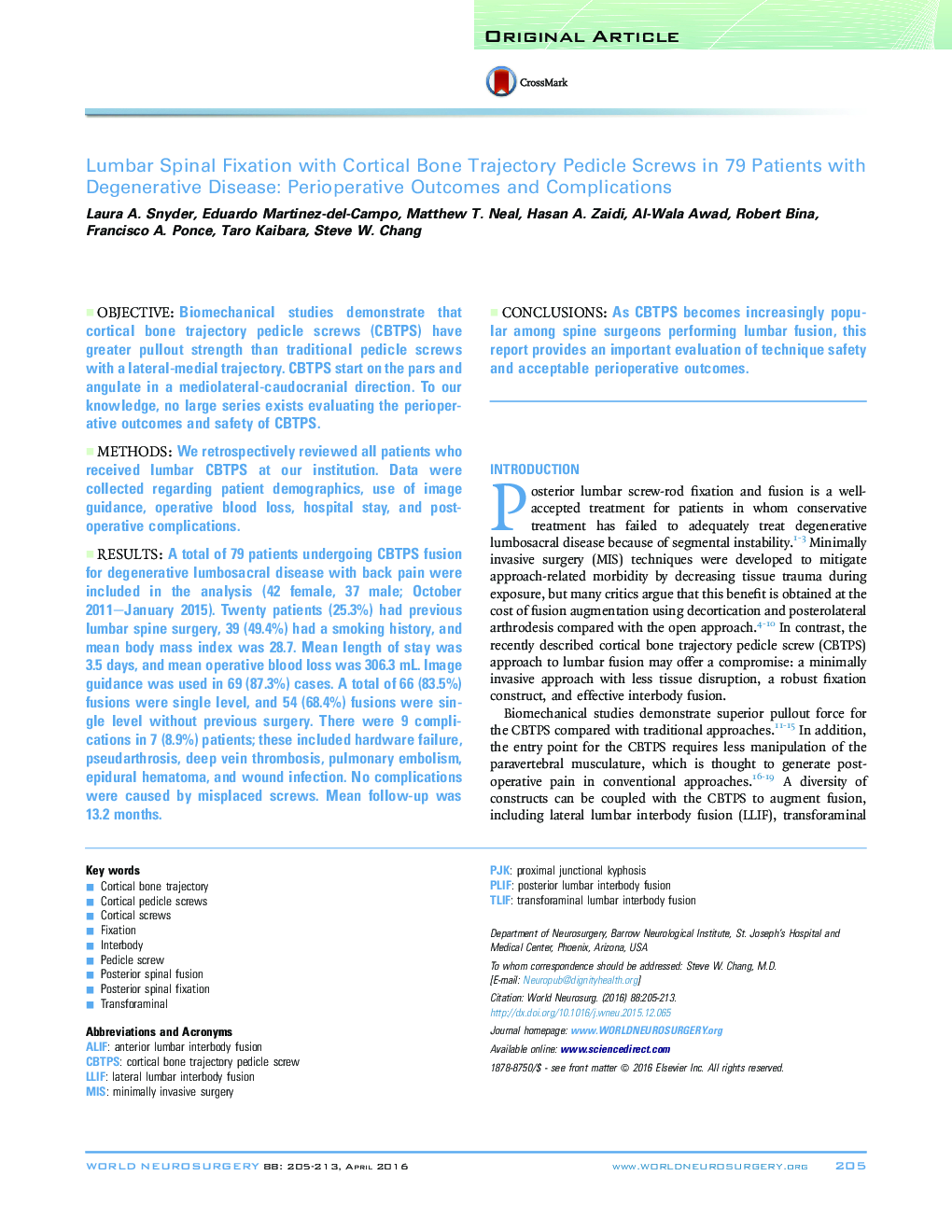| Article ID | Journal | Published Year | Pages | File Type |
|---|---|---|---|---|
| 6044210 | World Neurosurgery | 2016 | 9 Pages |
ObjectiveBiomechanical studies demonstrate that cortical bone trajectory pedicle screws (CBTPS) have greater pullout strength than traditional pedicle screws with a lateral-medial trajectory. CBTPS start on the pars and angulate in a mediolateral-caudocranial direction. To our knowledge, no large series exists evaluating the perioperative outcomes and safety of CBTPS.MethodsWe retrospectively reviewed all patients who received lumbar CBTPS at our institution. Data were collected regarding patient demographics, use of image guidance, operative blood loss, hospital stay, and postoperative complications.ResultsA total of 79 patients undergoing CBTPS fusion for degenerative lumbosacral disease with back pain were included in the analysis (42 female, 37 male; October 2011-January 2015). Twenty patients (25.3%) had previous lumbar spine surgery, 39 (49.4%) had a smoking history, and mean body mass index was 28.7. Mean length of stay was 3.5 days, and mean operative blood loss was 306.3 mL. Image guidance was used in 69 (87.3%) cases. A total of 66 (83.5%) fusions were single level, and 54 (68.4%) fusions were single level without previous surgery. There were 9 complications in 7 (8.9%) patients; these included hardware failure, pseudarthrosis, deep vein thrombosis, pulmonary embolism, epidural hematoma, and wound infection. No complications were caused by misplaced screws. Mean follow-up was 13.2 months.ConclusionsAs CBTPS becomes increasingly popular among spine surgeons performing lumbar fusion, this report provides an important evaluation of technique safety and acceptable perioperative outcomes.
